
Comics Enter The Fight Against Polio Part 2
Posted January 13, 2012 at 7:00 pm
By David LoTempio, Contributor(With assistance from Steven Bennett for additional research)
The 1940s were a dangerous and nervous time in America, and not just because of World War II. The nation experienced cyclical and increasingly widespread epidemics of polio during this period. While most people exposed to the virus would fully recover, the disease’s dramatic ability to paralyze or kill the infected left a profound fear through the country. The National Foundation for Infantile Paralysis led the civil fight against the disease. Their campaign had a tremendous impact the cultural landscape of 40s America, and the garish super heroes from the Golden Age of comic books were among those who joined the battle.
If you needed a hero, you couldn’t do much better than Superman. The Last Son of Krypton was unbeatable against Nazi saboteurs, mad scientists, and giant robots, but even he needed help in the fight against polio. Fortunately he could turn to members of his official fan club: the Supermen of America. This ad from late 1943 dramatizes Superman’s plea. The polio virus has grown to gigantic proportions (likely a gestalt entity formed by exposure to Kryptonite). Superman appears to have the virus on the ropes but Clark Kent knows that all the super-strength in the world can’t eradicate polio. A clarion call has gone out to join the fight with dimes. The National Foundation for Infantile Paralysis raised funds through their famous March of Dimes campaign. If defeating polio wasn’t enough of an inducement, well then Superman sweetened the deal by offering free membership in his Supermen of America, a pin, an official membership certificate, a secret code card (obviously so that Polio couldn’t read the battle plans) and a picture of Superman signed by the Man Of Steel. What a bargain!
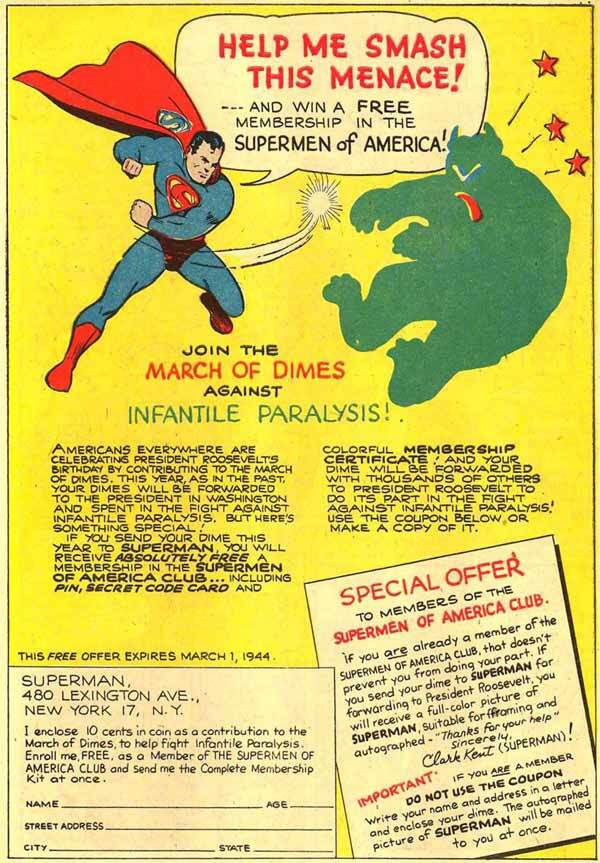
Money generated by the March of Dimes campaign was used to finance vaccine research and innovative therapy for infected patients. One piece of medical equipment that would have a lasting impact on care was the negative pressure ventilator, more commonly known as a respirator or iron lung. The technology behind the iron lung existed as far back as the 1800s but the first popular application was developed by Philip Drinker and Louis Agassiz Shaw Jr., at the Harvard School of Public Health. Drinker’s iron lung was highly effective. According to Harvard, the iron lung’s first patient was an unconscious child suffering from respiratory paralysis. The child regained awareness in less than a minute after the respirator was started. (Source: http://www.hsph.harvard.edu/research/erc/files/no_whoswho_editsept10updates.pdf)
The iron lung was useful as a long-term adaptive device as well as for short-term recover. The first person to live at home and travel extensively with an iron lung was Frederick Snite Jr., the son of a wealthy Chicagoan. At age 25 he was disabled by respiratory polio in 1936 in Peking, China. At that time, there were only 222 iron lungs in the world and one just happened to be at the Peking Medical College for use with opium smokers. Snite lived in the iron lung for almost 20 years before dying in 1954. He didn’t let the iron lung impair his enjoyment of life either. Snite’s biographer reported that Snite governed his own life, actively made decisions in his household, and even got married and fathered three daughters.
The success of the iron lung was not lost on the National Foundation for Infantile Paralysis. The group commissioned mass distribution of the device in 1939. Investing in this technology meant that individuals afflicted with paralysis wouldn’t suffocate before their bodies could fight off the infection. The challenge for the infirm was finding an iron lung, and finding it quickly. That was where Wonder Woman came in. The page below is taken from All-American Comics #48, published by National Periodicals with a cover date of March 1943. The advert encourages readers to donate to the March of Dimes campaign, which deliberately coincided with President Roosevelt’s birthday. But the content of the actual comic is more interesting than its purpose because it offers a historical perspective on the iron lung.
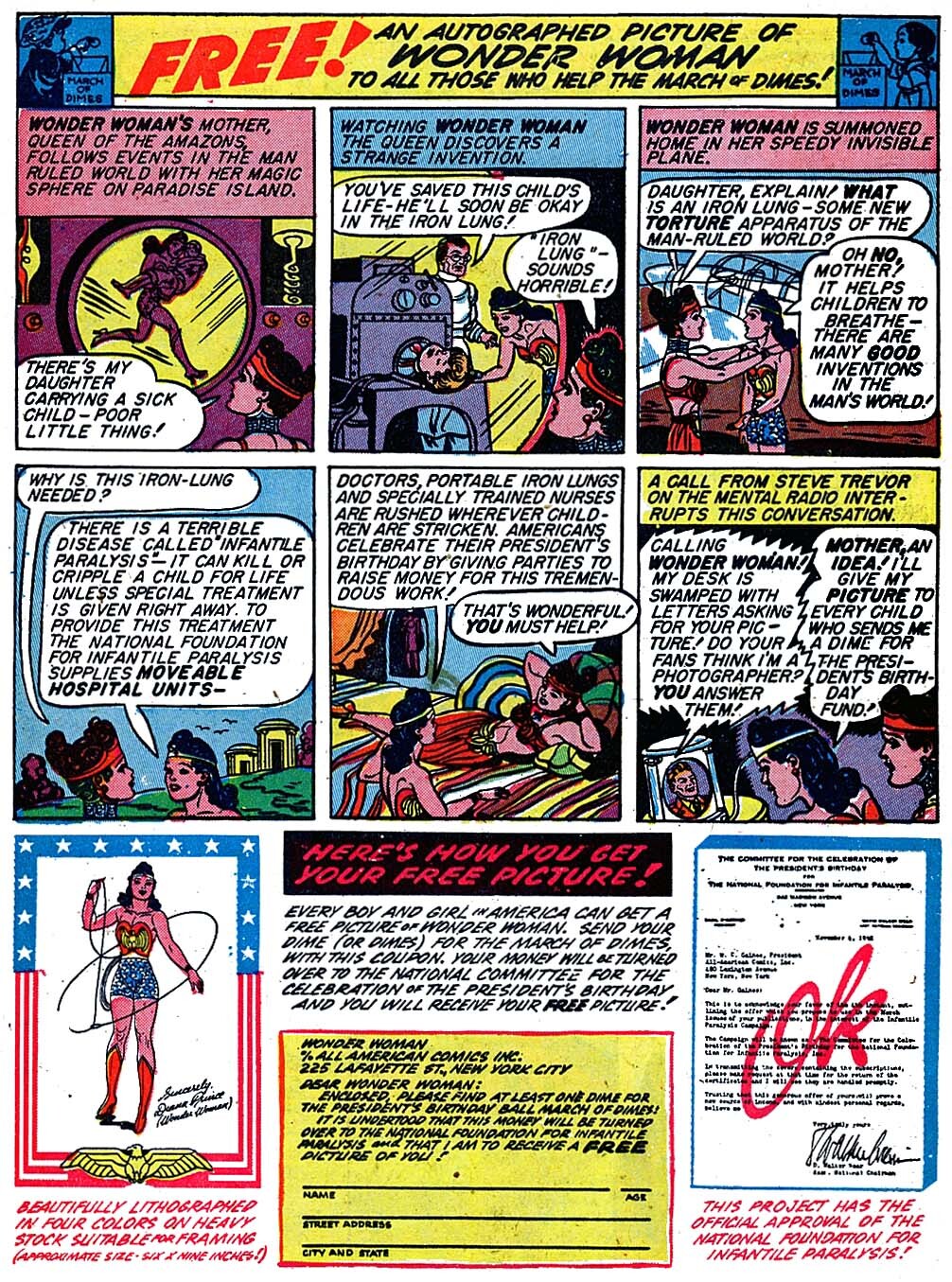
The comic’s story is a classic example of cultural dissonance, n.e. Amazonian culture vis-à-vis American, allowing the creators to explain the importance of an issue. Queen Hippolyta, Wonder Woman’s mother, is naturally confused by her daughter’s actions and the iron lung technology. Their home of Paradise Island is virtually free of disease and infirmity (and men, although I hope that’s just a coincidence). Hippolyta has no cultural reference for the iron lung except perhaps as a “torture device.” Fortunately, her daughter is able to prove she’s not terrorizing children but saving them. It is difficult to identify the type of iron lung used in the comic but it is similar to the Drinker Respirator. The following pictures demonstrate some of Drinker’s designs before and leading up to the 40s.
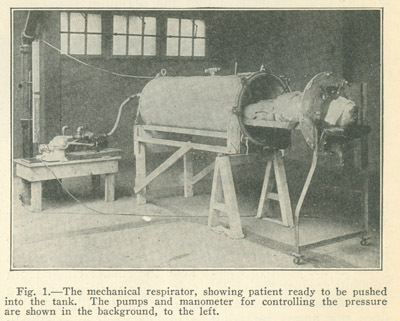
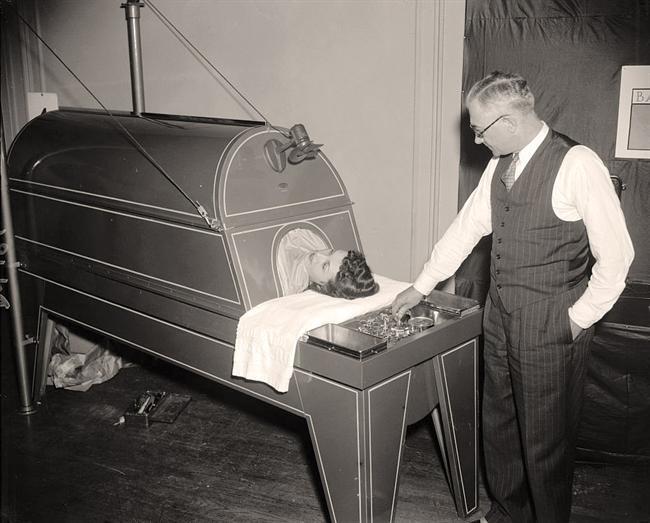
While Drinker’s Iron Lung was marvelously effective, it wasn’t terribly comfortable, and it was also loud and expensive to purchase. An iron lung cost as much as $1,500, the equivalent of buying a 1930s home. A new iron lung design was completed in 1931 by John Haven Emerson. This respirator was quieter, lighter, more efficient, and cheaper with a $1000 price tag. Emerson continued to improve the iron lung design through the 30s and 40s. Some of his innovations include replacing blowers and valves with a flexible diaphragm, adding quick opening and closing functions, an improved pressure gauge, and side doors that allow attendants to adjust patients. Drinker wasn’t pleased by this competition and filed a lawsuit alleging Emerson had infringed on Drinker’s patents. The lawsuit was eventually tossed out, with the court allegedly ruling that Drinker’s patents were invalid as the technology had been patented by others years earlier.
Regardless of the unsavory acrimony between Drinker and Emerson, the effectiveness of the iron lung was obvious to the medical profession and the public. As Wonder Woman notes in the 3rd and 4th panels, the iron lung enabled sick children to breathe freely and that the National Foundation for Infantile Paralysis made these wondrous devices available via moveable hospital units. The Foundation purchased hundreds of respirators, some able to hold four people at a time, and made them available to communities and hospitals throughout America during the epidemics of the 1940s. But by 1949, the cost of operating these units was too expensive for the National Foundation. They decided to distribute their iron lungs among 16 regional centers with multi-disciplinary professional teams across the country. This was a propitious decision as the centers were equipped by 1950, just in time for the polio epidemics that plagued the decade. But perhaps all of this work and tragedy could have been avoided by Wonder Woman in the 40s if she had embraced her mother’s backing.
Queen Hippolyta quickly realizes the significance of the National Foundation for Infantile Paralysis in the comic and encourages her daughter to continue her work. She even apparently allows her daughter to use glamour photographs to entice donations. While this is all well and kitshy, it is more interesting to note the assistance the Queen and daughter withhold from the public! One of the factors why Paradise Island was a veritable Eden is the Purple Ray. This amazing healing device was invented by Wonder Woman herself to save the life of future boyfriend Steve Trevor, as seen in the excerpt below.
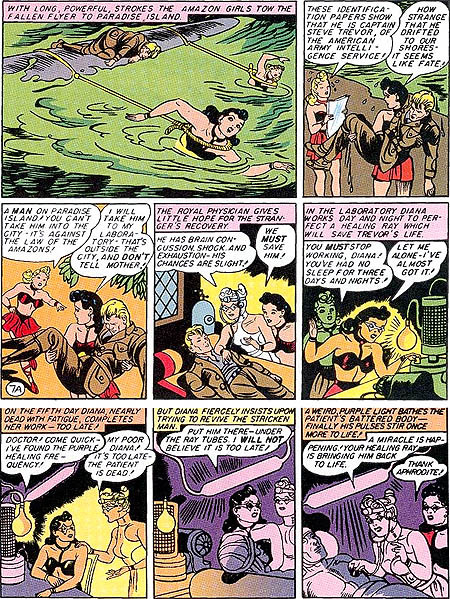
The miraculous Purple Ray doesn’t exist in real life of course, and the objective of the advert is to support the very real efforts of the National Foundation for Infantile Paralysis to combat polio. That said, a devotee of Wonder Woman can’t help but wonder if the Amazon is withholding treatment or just can’t hear the wispy plaintive cries of the child. We’ll never know. Thankfully, the iron lung and the purple ray would become superfluous in the war against polio. Jonas Salk developed the Polio vaccine in 1952. Cases of polio infection dropped from the thousands in the 50s to under 200 cases in 1961. This success was achieved in part thanks to the donations generated by fictional characters like Wonder Woman and Superman. And for that, they have our thanks.
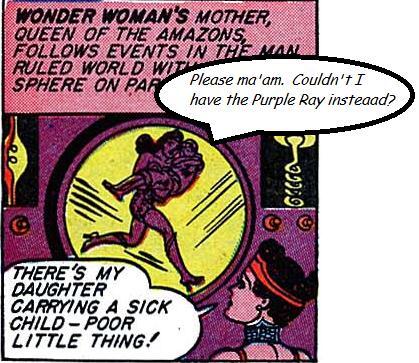
- Category
- Museum of disABILITY History Blog
- Tags
- Comic Books | Disability History | Polio | Pop Culture

Comments
Add a comment
Bob Glenn
Posted January 15, 2015 at 12:00 am